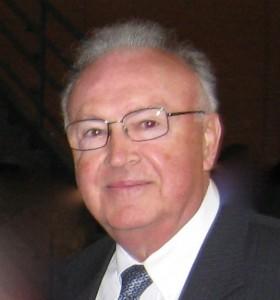Blogrige
The Official Baldrige Blog

Portrait of Arnold Weimerskirch
In a recent conversation with Gary Floss, a former chair of the Baldrige Panel of Judge and current Alumnus Examiner, I learned about the work of Arnie Weimerskirch and the Veritas Institute at the University of St. Thomas in Minneapolis, MN. I was intrigued by what Gary said and it gave me an opportunity to reconnect with Arnie, who served on and chaired the Baldrige Panel of Judges in the years 1992-1994. Arnie has applied Baldrige philosophy in the development of two assessment tools, one related to the six Catholic moral principles for health care and one to the ISO 26000 standard for social responsibility.
Let me share a little information about Arnie Weimerskirch first. He was the VP of Corporate Quality for Honeywell, Inc. at the time he served on the Panel of Judges. He authored one of the early guides to the 1990's era Baldrige Criteria entitled Baldrige for the Baffled. Arnie is the originator of the phrase stating that the Baldrige Criteria represent "the leading edge of validated management practice." This phrase has been our mantra since he stated it and was only slightly modified in 2015 to "the leading edge of leadership and performance practice." Since leaving Honeywell he has been associated with the School of Engineering and more recently the Opus College of Business at the University of St. Thomas.
Weimerskirch believes at the heart of Baldrige is the philosophy that organizations can develop criteria questions on important topics to accomplish two purposes: to self-assess and to improve. The self-assessment should allow the identification of strengths and opportunities for improvement. The strengths and opportunities for improvement should be the basis for reflection and then prioritized improvements.
The two assessment tools developed by the Veritas Institute are the Business Ethics Assessment Method (BEAM) and the Catholic Identity Matrix (CIM). BEAM consists of seven paragraph descriptors, one for each of the seven core subjects in ISO 26000, and a series of questions tied to the 37 issues addressed in the standard. BEAM has a simplified scoring rubric to gauge on a level of 0-5 the maturity of the organization's process approach and deployment relative to the 37 issues. You can see the Baldrige underpinnings.
The Catholic Identity Matrix was developed in 2005 to help "a Catholic health system or hospital assess and enhance the degree to which it has integrated the six Catholic moral principles within its operating policies, processes and practices." The CIM has been used by approximately 50 hospitals through a process of assembling background data and an on-site workshop with two CIM facilitators to collaboratively address the assessment questions associated with the six moral principles: solidarity with those who live in poverty, holistic care, respect for human life, participatory community of work and mutual respect, stewardship, and acting in communion with the church. In a very Baldrige-like manner the aim of the CIM is to help organizations address the challenge of mission integration and improve.
I enjoyed the opportunity to catch up with Arnie and see how he continues to apply the Baldrige philosophy in his work. The Baldrige Program is currently working in collaboration with Communities of Excellence 2026 to apply the philosophy to creating high-performing local communities across the U.S. What topics might you choose for applying the Baldrige philosophy?
About the author
Related Posts
Comments
- Reply





